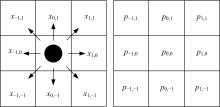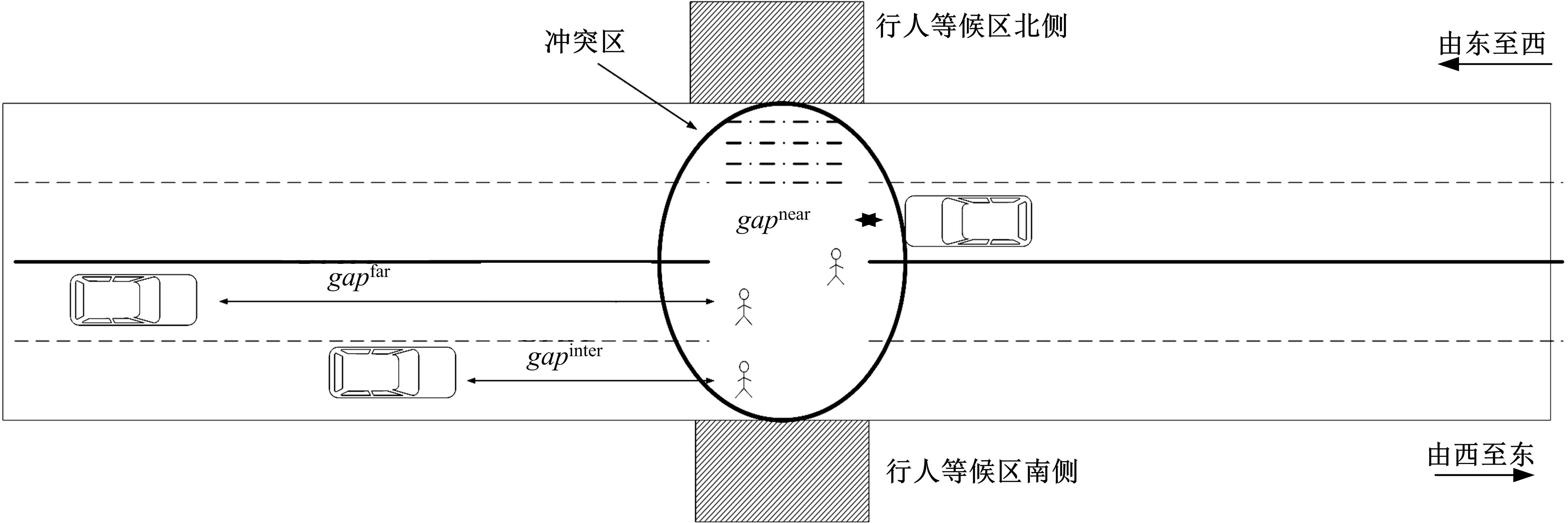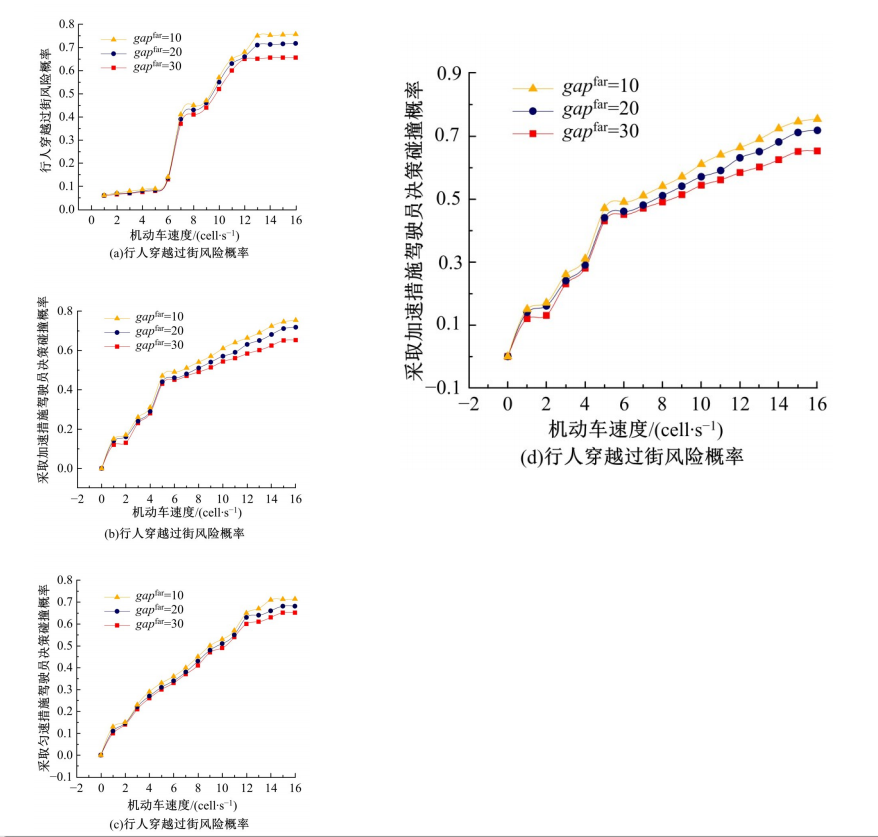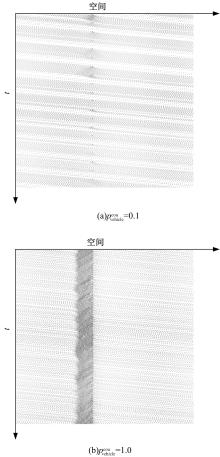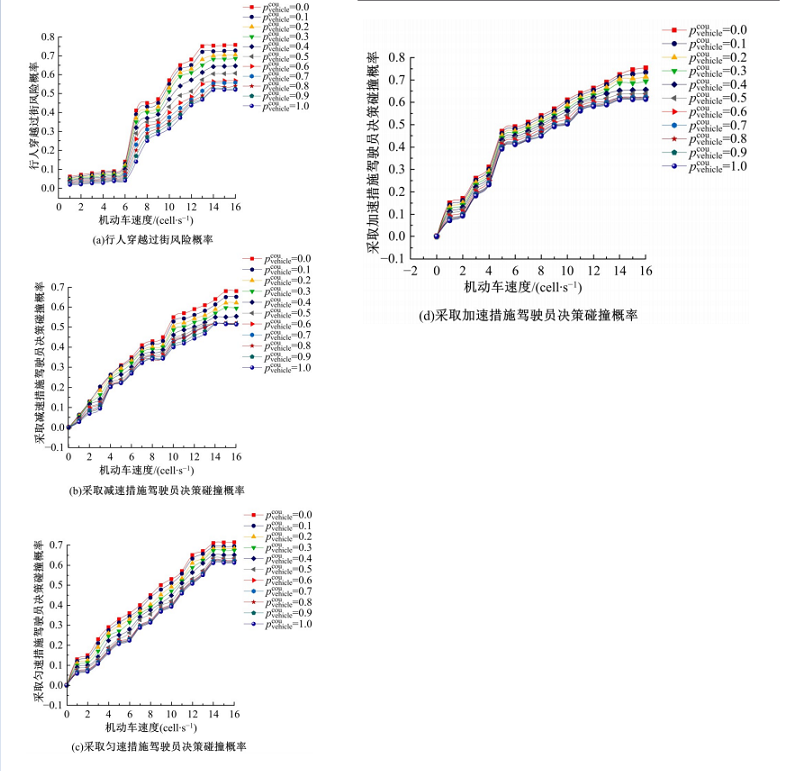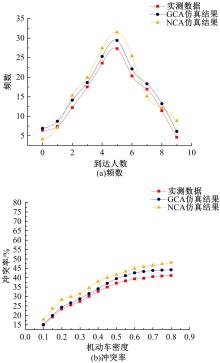| 1 |
Nagel K, Schreckenberg M. A cellular automaton model for freeway traffic[J].Journal de Physique I, 1992, 2(12): 2221-2229.
|
| 2 |
Tian J F, Li G Y, Treiber M, et al. Cellular automaton model simulating spatiotemporal patterns, phase transitions and concave growth pattern of oscillations in traffic flow[J]. Transportation Research Part B: Methodological, 2016, 93: 560-575.
|
| 3 |
Hu X, Hao X, Wang H, et al. Research on on-street temporary parking effects based on cellular automaton model under the framework of Kerner's three-phase traffic theory[J]. Physica A: Statistical Mechanics and its Applications, 2020, 545: No. 123725.
|
| 4 |
Jin S, Xu L, Xu C, et al. Lane width‐based cellular automata model for mixed bicycle traffic flow[J]. Computer-Aided Civil and Infrastructure Engineering, 2019, 34(8): 696-712.
|
| 5 |
Liu Q, Sun J, Tian Y, et al. Modeling and simulation of nonmotorized vehicles' dispersion at mixed flow intersections[J]. Journal of Advanced Transportation, 2019, 5:1-19.
|
| 6 |
岳昊, 邵春福, 陈晓明, 等. 基于元胞自动机的对向行人交通流仿真研究[J]. 物理学报, 2008, 57(11): 6901-6908.
|
|
Yue Hao, Shao Chun-fu, Chen Xiao-ming, et al. Simulation of bi-drectional pedestrian flow based on cellular automata model[J]. Acta Physica Sinica,2008, 57(11): 6901-6908.
|
| 7 |
Tao Y Z, Dong L Y. A cellular automaton model for pedestrian counterflow with swapping[J]. Physica A Statistical Mechanics and Its Applications, 2017, 475: 155-168.
|
| 8 |
陈沂川. 基于元胞自动机的城市轨道交通流特性研究[D]. 北京:北京交通大学电子信息工程学院, 2011.
|
|
Chen Yi-chuan. Research on property of train flow in city express railway system based on cellular automata[D]. Beijing: School of Electronic and Information Engineering, Beijing Jiaotong University, 2011.
|
| 9 |
齐姗姗, 彭其渊. 改进的元胞自动机列车交通流仿真模型研究[J]. 计算机工程与应用, 2019, 55(24): 254-258.
|
|
Qi Shan-shan, Peng Qi-yuan. Train flow research of moving block system based on improved cellular automation model[J]. Computer Engineering and Applications, 2019, 55(24):254-258.
|
| 10 |
Lu L, Ren G, Wang W, et al. A cellular automaton simulation model for pedestrian and vehicle interaction behaviors at unsignalized mid-block crosswalks[J]. Accident Analysis & Prevention, 2016, 95(B): 425-437.
|
| 11 |
Zhao H T, Liu X R, Chen X X, et al. Cellular automata model for traffic flow at intersections in internet of vehicles[J]. Physica A: Statistical Mechanics and its Applications, 2017, 494: 40-51.
|
| 12 |
Liu Q Y, Sun J, Tian Y, et al. Modeling and simulation of nonmotorized vehicles' dispersion at mixed flow intersections[J]. Journal of Advanced Transportation, 2019, 5: 1-19.
|
| 13 |
王迪. 基于CA模型的城市道路多路合流路段交通流特性研究[D]. 重庆: 重庆交通大学交通学院,2016.
|
|
Wang Di. The traffic characteristics of multichannel Megre one road with cellular automata model[D]. Chongqing: School of Transportation, Chongqing Jiaotong University, 2016.
|
| 14 |
黄青霞, 贾斌, 强生杰, 等. 基于元胞自动机的高速公路施工区交通影响分析[J]. 长安大学学报: 自然科学版, 2015, 35(): 254-258.
|
|
Huang Qing-xia, Jia Bin, Qiang Sheng-jie, et al. Analysis of traffic influence of freeway work zone based on cellular automata model[J]. Journal of Chang'an University(Natural Science Edition), 2015, 35(S1): 254-258.
|
| 15 |
田晟, 许凯, 马美娜. 基于元胞自动机的城市施工路段车辆变道行为研究[J]. 重庆交通大学学报: 自然科学版, 2019, 38(1): 113-118, 124.
|
|
Tian Sheng, Xu Kai, Ma Mei-na. Lane changing behavior of vehicles in urban road work zone based on cellular automata[J]. Journal of Chongqing Jiaotong University(Natural Science), 2019, 38(1): 113-118.
|
| 16 |
邝先验, 陈自如. 设置非机动车等候区的信号交叉口交通流模型[J]. 交通运输系统工程与信息, 2019, 19(4): 179-186.
|
|
Kuang Xian-yan, Chen Zi-ru. Traffic flow model of signalized intersection with non-motor vehicle waiting area[J]. Journal of Transportation Systems Engineering and Information Technology, 2019, 19(4): 179-186.
|
| 17 |
邝先验, 陈自如. 考虑礼让行人的交叉口机非混合交通流模型[J]. 广西师范大学学报: 自然科学版, 2019, 37(4): 1-15.
|
|
Kuang Xian-yan, Chen Zi-ru. Mixed traffic flow model of signalized intersections involving pedestrian comity[J]. Journal of Guangxi Normal University(Natural Sicience Edition), 2019, 37(4): 1-15.
|
| 18 |
Kuang X Y, You L Q, Chen Z R, et al. Modelling and simulation for two-wheel vehicle flow based on cellular automaton[J]. Advances in Transportation Studies, 2016, 38:91-106.
|
| 19 |
Zhao H T, Yang S, Chen X X. Cellular automata model for urban road traffic flow considering pedestrian crossing street[J]. Physica A: Statistical Mechanics and its Applications, 2016, 462: 1301-1313.
|
| 20 |
Wardrop J G. Some theoretical aspects of road traffic reesarch[J]. Proceeding of the Institute of Civil Engineers, Part II, 1952, 1(36): 352-362.
|
| 21 |
李平. 基于博弈论的行人过街冲突模型研究[D]. 哈尔滨:哈尔滨工业大学深圳研究生院, 2011.
|
|
Li Ping. Research on the conflict model of pedestrian crossing based on game theory[D]. Harbin: Shenzhen Graduate School of Harbin Institute of Technology, 2011.
|
| 22 |
刘丽娟, 杨澄雄. 基于博弈论的城市道路行人过街决策研究[J]. 公路与汽运, 2014, 29(1): 54-56.
|
|
Liu Li-juan, Yang Cheng-xiong. Stuy of pedestrian Crossing in urban road based on game theory[J]. Highway & Automotive Applications, 2014, 29(1):54-56.
|
| 23 |
杨玉婷. 过街行人与机动车冲关的博弈模型[D]. 北京:北京理工大学机械与车辆学院, 2016.
|
|
Yang Yu-ting. Game theory model of conflicts between pedestrians and vehicles at crosswalk[D]. Beijing: School of Mechanical Engineering and Vehicles, Beijing Institute of Technology, 2016.
|
| 24 |
李新波. 基于博弈论的路段行人过街决策研究[D]. 长春: 吉林大学通信工程学院, 2016.
|
|
Li Xing-bo. Research on pedestrian crossing decision making of road section based on game theory[D]. Changchun: College of Communication Engineering, Jilin University, 2018.
|
| 25 |
马平. 基于博弈论的信号交叉口行人与机动车冲突分析研究[D]. 北京:中国人民公安大学治安与交通管理学院, 2018.
|
|
Ma Ping. Reseach of confilct between pedestrians and vehicles at signalized intersection based on game theory[D]. Beijing: School of Public Security and Traffic Management, Chinese Public Security University, 2016.
|
| 26 |
徐良杰, 王炜. 信号交叉口行人过街时间模型[J]. 交通运输工程学报, 2005, 5(1): 111-115.
|
|
Xu Liang-jie, Wang Wei. Model of pedestrians crossing time at signalized intersection[J]. Journal of Traffic and Transportation Engineering, 2005, 5(1): 111-115.
|
| 27 |
程国柱, 刘博通, 吴立新. 城市道路过街行人风险感知及决策损失研究[J]. 交通运输系统工程与信息, 2014, 14(3): 131-136.
|
|
Cheng Guo-zhu, Liu Bo-tong, Wu Li-xin. Urban road crossing pedestrian risk perception and decision loss[J]. Journal of Transportation Systems Engineering and Information Technology, 2014, 14(3): 131-136.
|
| 28 |
高利平, 付春杰, 何会军, 等. 基于过街方式的信控路段行人-机动车冲突分析与延误模型[J]. 交通运输系统工程与信息, 2011, 11(): 14-21.
|
|
Gao Li-ping, Fu Chun-jie, He Hui-jun, at et. Delay model of ped-veh system based on pedestrian crossing signalized roads[J]. Journal of Transportation Systems Engineering and Information Technology, 2011, 11(S1): 14-21.
|
| 29 |
齐薪玉. 城市道路车辆换道行为的博弈分析与仿真研究[D]. 北京:北京交通大学交通运输学院, 2019.
|
|
Qi Xin-yu. Game analysis and simulation research on vehcile lane changing behavior on urban roads[D]. Beijing: School of Transportation, Beijing Jiaotong University, 2019.
|
| 30 |
刘博通. 驾驶员与过街行人非合作动态博弈模型研究[D]. 哈尔滨:哈尔滨工业大学交通科学与工程学院, 2013.
|
|
Liu Bo-tong. Non-cooperative dynamic game model between drivers and crossing pedestrians[D]. Harbin: School of Transportation Science and Engineering, Harbin Institute of Technology, 2013.
|



